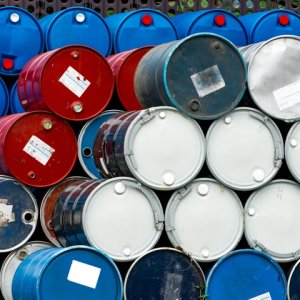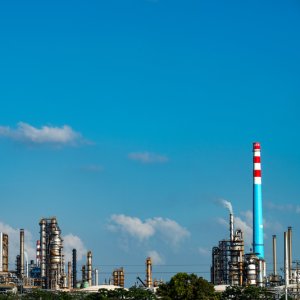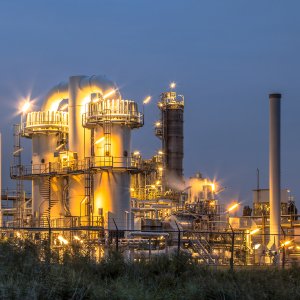In New Fuel Market, Supply Supersedes Price

STORY INLINE POST
Q: What have you defined as your members’ key priorities for 2019 in terms of the Mexican government’s energy policy?
A: Guaranteeing supply is extremely important for us. In our interactions with all the major actors working all along the value chain of fuel commercialization, that importance has been highlighted time and time again. Up until fairly recently, our main focus was on examining the offers being made by all the different brands in the market regarding the profitability and commercial margins that we could be negotiating; we did not see supply as an urgent question to be addressed at the time. However, as a result of the government’s stated vision of confronting the huachicol issue in a timely and direct manner, which we applaud, a complex situation emerged during the first few days of 2019 that was difficult to manage by companies and businesspeople. As a result, guaranteeing supply is the most important challenge faced by the average fuel company. We are also prioritizing the future of CRE. It is important to have a regulating body that can provide certainty and a level playing field for industry participants and competitors.
Q: As an industry, what measures are being discussed to tackle the huachicol issue?
A: We agree that it is necessary to combat huachicol because, frankly, it is our main competitor. In this country there is an illegal parallel network of fuel supply and distribution whose presence and influence are quite strong. It has been a problem for years, and service stations could have been involved. However, we do believe that the main channels through which huachicol fuel is commercialized are gas stations. This clandestine network operates through a category of distributors and establishments known as cachimba, found on roadsides all over the country. For every gas station, there are at least four cachimbas. If there are at least 13,000 gas stations across the country, then you can see that we are talking about a serious distribution web.
In general, we are helping the government with its distribution scheme and its regulatory initiatives. We are also cooperating with the changes that it is implementing in its volumetric controls. These changes include the installation of fuel gages that measure offloading all along the value chain, which will significantly strengthen the government’s push to make fuel supply a much more transparent and traceable process, from maritime terminals and resources imported into the country by road or rail to the end consumer.
ONEXPO is respectful of all new regulatory frameworks and decrees, and we are trying to cooperate with state authorities as much as possible. As a matter of fact, we began 2019 by placing our member companies’ entire privately-owned vehicle fleet at the government’s disposal, plus additional distribution resources that we obtained through collaboration agreements that we negotiated with CANACAR and CONATRAM. In general, we are aligned with the government.
Q: How do you expect your members to manage their supply if these events motivate them to create their own private infrastructure?
A: 25 years ago, there were 3,500 gas stations and 75 storage terminals in Mexico. Today, we have 13,000 gas stations, with the expectation that we will have 16,500 by 2024, but the same number of storage terminals. This is a big problem to which you have to add increased demand; we are talking about over 5 billion liters of fuel a month, or 172 million a day, to over 13 million customers a day. To that number of storage terminals, we can only add three private storage terminals that are now online.
Major players new to this Mexican context, like ExxonMobil and Total, decided to take a specific approach when entering the market. ExxonMobil specifically developed private infrastructure on both sides of the Mexican-American border to import their own fuel by rail. Infrastructure development in general is now focused on delivering fuel as close to the end consumer as possible. This resulted in the creation and use of transfer terminals because of the delay represented by the longer development cycle of tank-based projects. This is the basis for a new infrastructure model. Nobody in Mexico, at least for now, is having formal conversations about investing in ducts as part of this infrastructure because everybody is investing in these terminals. What this tells us is that everything is being structured in terms of the closeness of these terminals to the service stations grouped near the demand centers, with the product mainly arriving by rail, although this closeness will also enable a lot of road-based transportation. International brands are already capitalizing on the market that this creates through the booking of capacity in marine terminals, land terminals and rail transportation. This is partially due to how safe it is. In terms of efficiency, it is competitive with road transportation and can become even more efficient, creating greater value.
Q: What is ONEXPO doing to assist its members with the lengthy permitting process involved in the building of infrastructure?
A: Certainly, delays due to permitting have become a serious problem. To install a service station, we need at least a year just for permitting. The speed with which we are opening new stations might give the impression that this aspect of our business is being expedited or that it has somehow become easier, but it really has not. There is actually a large number of service stations all over the country that are finished and functional but are closed because they did not do the permitting process properly, which is also extremely expensive.
The newest regulation also calls for the full implementation of all SASISOPA protocols prior to opening your station, which makes business even more complicated. Some service stations spend up to 40 percent of their budgets on regulatory compliance. That already takes into account that up to 30 percent of fuel prices can be attributed to taxes. This creates additional problems when it comes to arriving at a fair and also operationally viable price. Of course, the exact composition of that 40 percent depends on the geographical area and the type of fuel that you are working with. All of this tightens our commercial margins, which in general are more attractive midstream than downstream. However, we believe the authorities will slowly begin to relax this over-regulation.
Q: What impact does ONEXPO expect from the government’s plans to lower gas prices?
A: The guarantee of supply will always supersede price, which is why price is not as large an issue as you might think, especially now that the product is being de-commoditized and customers are looking at so much more than just price. This is why marketing is so important and why we are investing so many resources on training programs for our members in this area.
The major players have international experience competing in this arena but they do not have any experience with the intricacies of the Mexican market. Some of the things being offered as “features” by these companies were already guaranteed by PEMEX previously, so they have to be modified or expanded to really create added value as part of their marketing vision.
This focus on marketing will also change what used to be one of the decisive value-creating factors for gas stations: location. PEMEX’s location choices used to function based on the needs of a network but now the choice of location will begin to function based on the specific needs of several groups. These seem like overtly similar approaches but they actually imply a number of very important differences. Chief among them is the fact that location will no longer respond merely to demand. Once location, like price, becomes but one variable of both a larger marketing strategy and also a systematic question of efficiency, it starts to respond to a much more complicated series of interests and incentives.
Organización Nacional de Expendedores de Petróleo (ONEXPO) is the largest Mexican association of fuel companies, responsible for representing the industry in its interactions with the government.
























